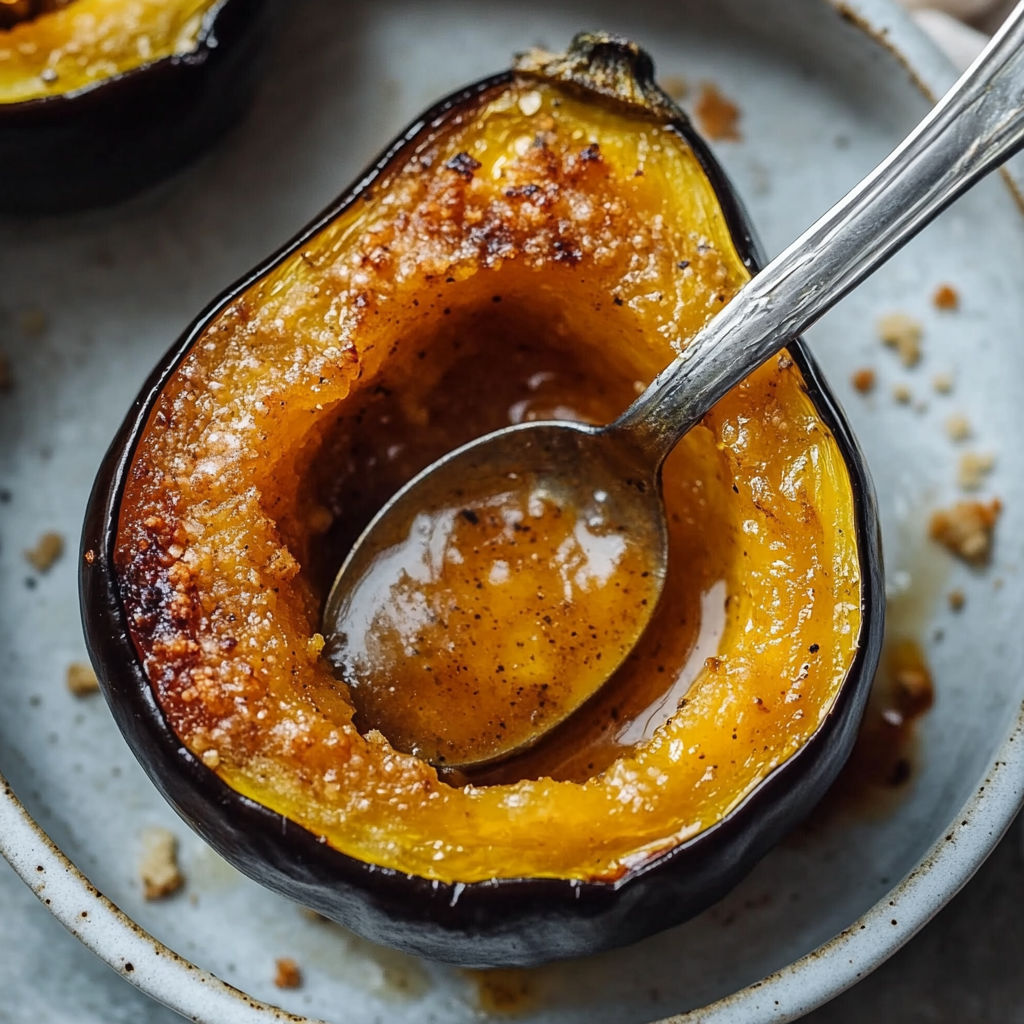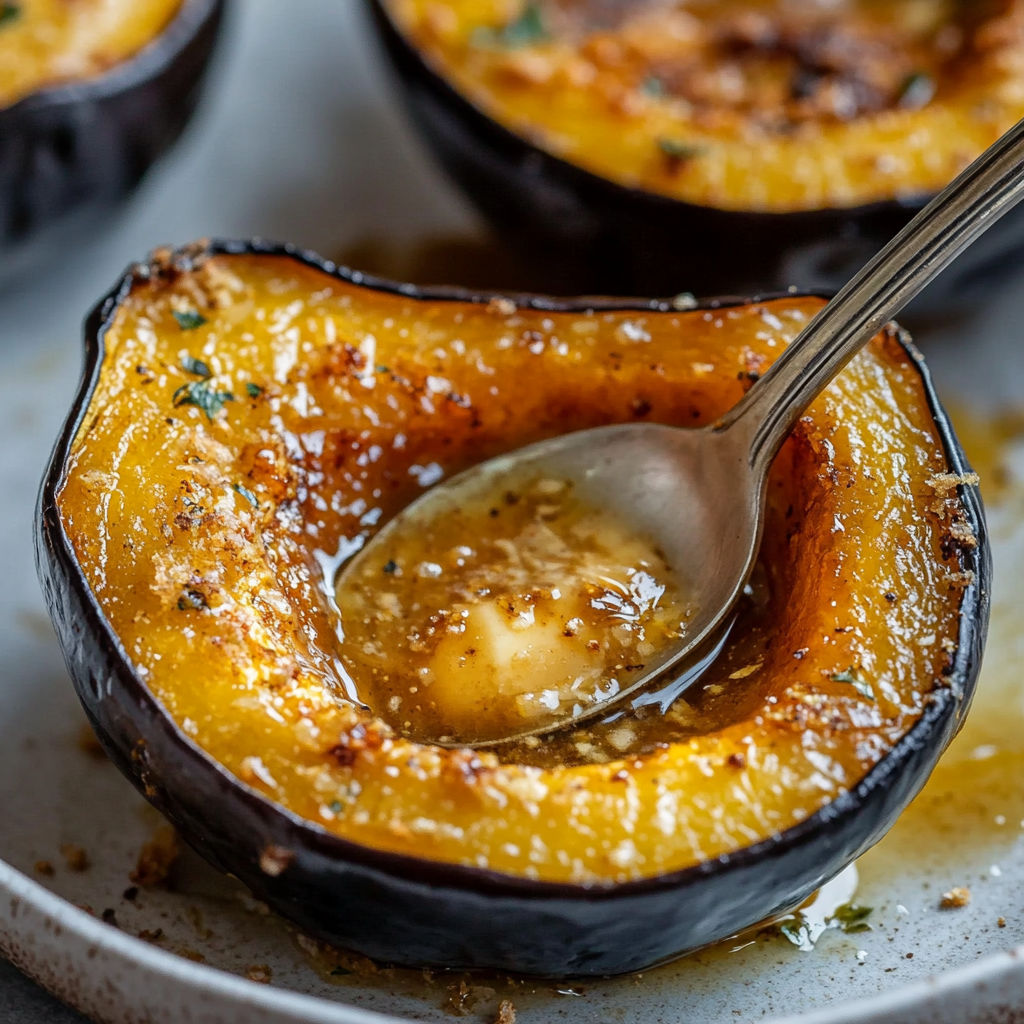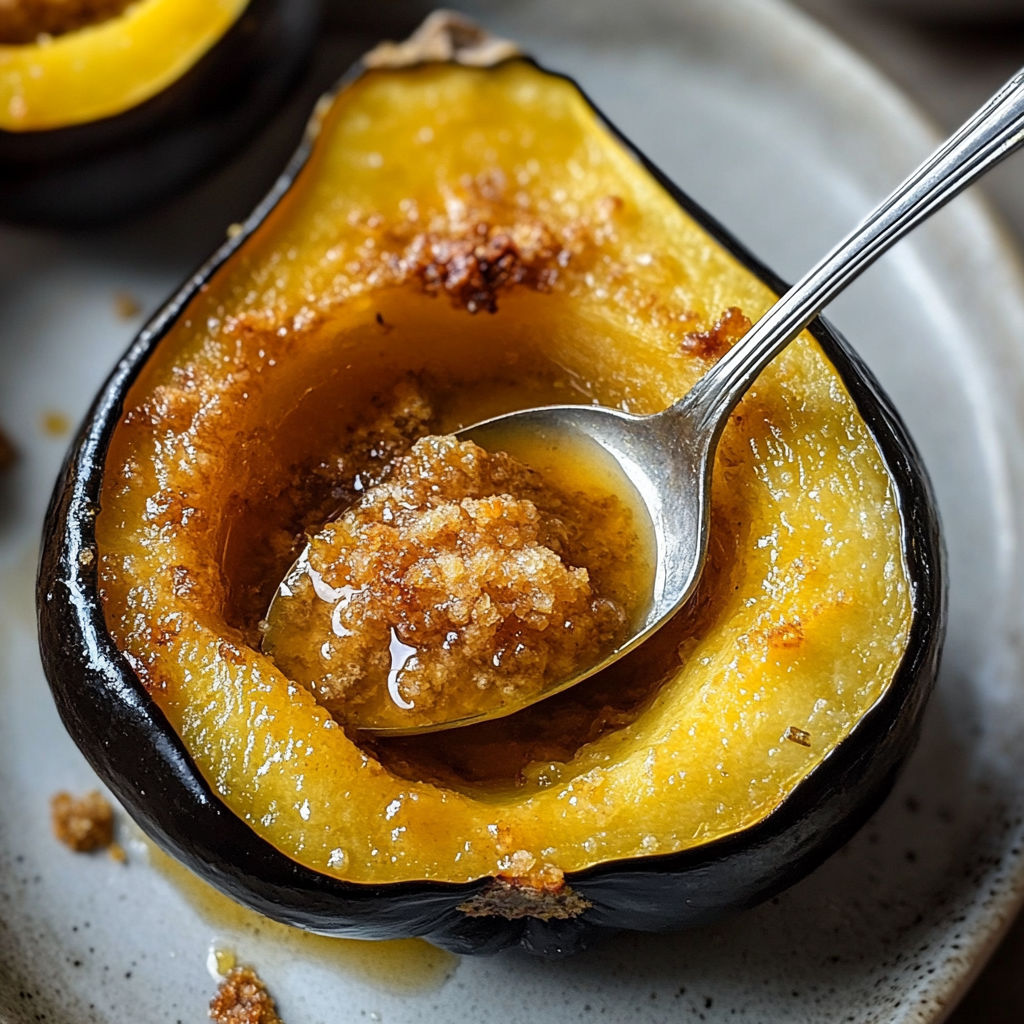 Pin it
Pin it
Roasted acorn squash with brown sugar is the kind of dish that makes fall meals feel cozy and effortless. Its natural sweetness and buttery warmth make it perfect for family dinners and easy enough for a last minute side.
I reach for this recipe on chilly evenings when I need something hands-off and loaded with comfort.
Ingredients
- Acorn squash: fresh with green skin and no soft spots, select one that feels heavy for its size
- Brown sugar: brings caramel sweetness, choose dark brown for deeper molasses notes
- Ground cinnamon: a dash adds warmth and classic autumn flavor
- Whipped butter: spreadable and easy to use, opt for real butter for best taste
- Water: helps steam the flesh for tender results, always use cold water for even baking
Instructions
- Prepare the Squash:
- Slice the acorn squash in half lengthwise using a sturdy chef knife. Scoop out all seeds and stringy fibers with a sturdy spoon. Inspect the cavities for any leftover bits to avoid bitterness.
- Butter and Season:
- Spread a half tablespoon of whipped butter evenly over the cut surface of each squash half. Coat all exposed flesh up to the skin edge. Sprinkle an even layer of brown sugar over each buttered half followed by a small pinch of ground cinnamon. Gently rub the sugar and spice in to create a caramelizing crust.
- Arrange and Add Water:
- Place the prepared squash halves cut side up in a glass or ceramic baking dish. Pour a quarter cup of cold water into the pan, letting it pool below the squash, but not directly on the flesh. This creates steam for tender results.
- Initial Bake:
- Cover the baking dish tightly with foil or a matching lid. Place it in the preheated 350 degree oven. Bake for about fifty minutes. Check at the forty minute mark if your squash is very small.
- Final Roast:
- After the initial bake remove the cover. Return the dish to the oven and roast uncovered for about ten minutes more. This step allows excess moisture to evaporate and lightly caramelizes the top.
- Rest and Serve:
- Carefully take the hot dish from the oven using mitts. Let the squash cool for several minutes before scooping out the flesh. Serve warm as a side or main with extra butter if desired.
 Pin it
Pin it
The first time I served this, my daughter called it "dessert for dinner" and has asked for it every Thanksgiving since. It makes even weeknight meals feel special.
Storage Tips
Once cooled store roasted squash in an airtight container in the refrigerator for up to four days. To reheat place in a covered dish and warm in a 350 degree oven for fifteen minutes. The squash can also be frozen in portions and reheated gently in the microwave or oven for an easy side later on.
Ingredient Substitutions
If you cannot find acorn squash try butternut or delicata squash for a similar sweetness and texture. Maple syrup makes a fragrant substitute for brown sugar and ghee or nondairy butter alternatives can be swapped if you prefer a dairy free version. Adding chopped pecans can add extra crunch.
Serving Suggestions
This dish pairs beautifully with roast chicken turkey or pork. It also stands well as a vegetarian entree when served with a hearty salad or wild rice pilaf. For a festive touch drizzle with a bit of honey or add a dollop of Greek yogurt.
Cultural and Historical Context
Acorn squash is native to the Americas and was cultivated by indigenous peoples long before European settlers arrived. Its ability to store through the winter months made it a staple in early American kitchens. The combination of roasted squash and sweeteners like brown sugar has roots in both Native and colonial cooking traditions.
 Pin it
Pin it
Acorn squash has always been my favorite winter vegetable because of its nutty flavor and melting texture. Every fall my kitchen fills up with the aroma of caramelized squash bringing back memories of family dinners by candlelight.
Frequently Asked Questions
- → How do I cut acorn squash safely?
Slice the squash in half from stem to tip using a sharp knife. Use a sturdy surface and be cautious as the rind is thick.
- → Can other sweeteners replace brown sugar?
Yes, maple syrup or honey can be used as alternatives for a different flavor profile.
- → Is it necessary to cover the squash while baking?
Covering during the first bake ensures the squash softens evenly and retains moisture.
- → How do I know when the squash is done?
The squash is ready when it is fork-tender and the flesh is soft and golden around the edges.
- → What can I serve with roasted acorn squash?
It pairs well with roasted meats, poultry, grains, or green salads for a balanced meal.
